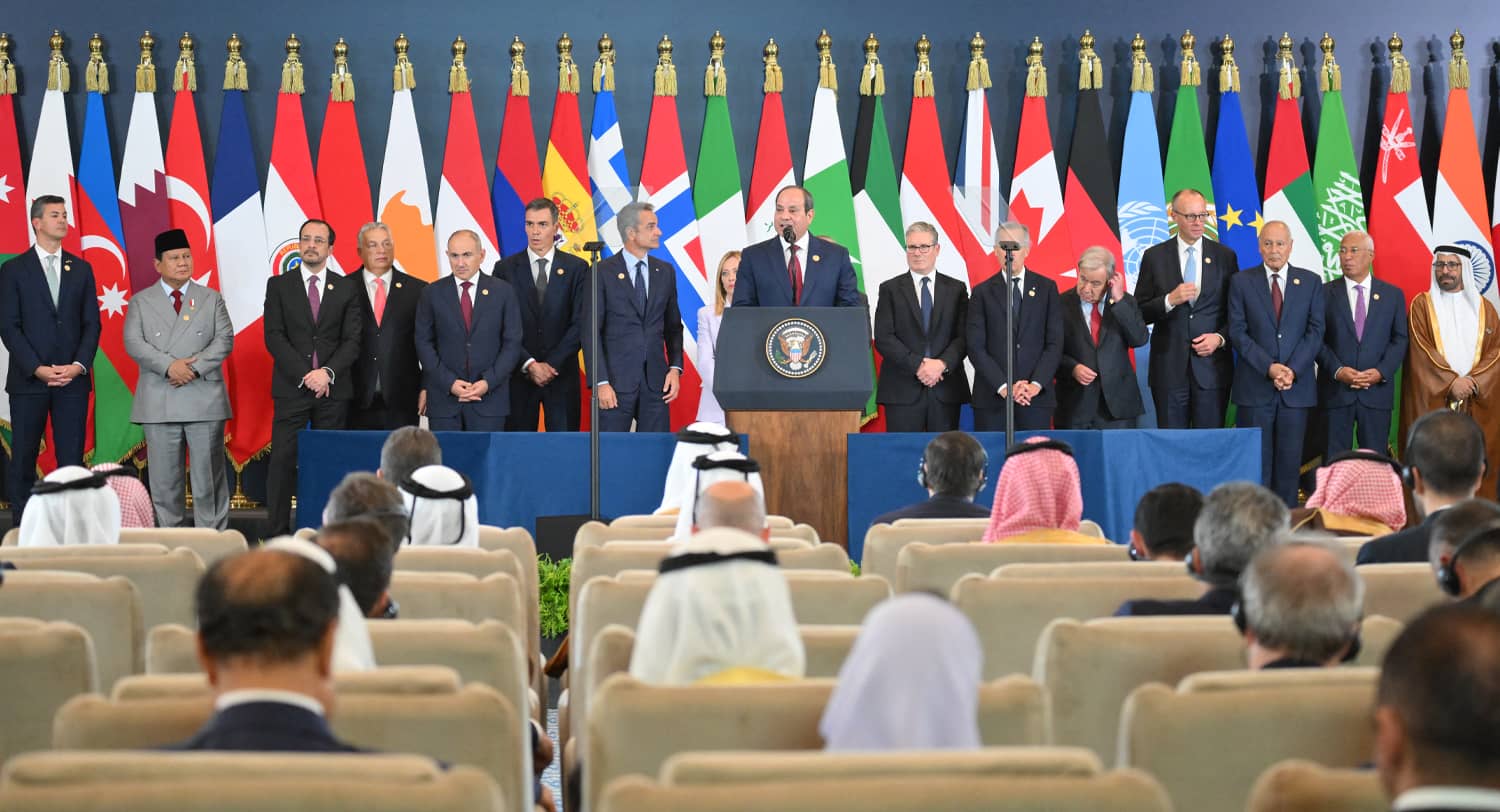President Donald Trump’s visit to Sharm el-Sheikh demonstrated the joint convening power of the US and Egypt, gathering at short notice the leaders of Europe and the Middle East to support the Trump Peace Plan. Having helped broker the ceasefire, President Abdel Fattah al-Sisi now faces the far harder challenge of shaping what comes next. Egypt can no longer confine itself to mediation. It should take the lead in working with Israel, the US, the Palestinians and the concerned states of the Middle East to define the political and security architecture of postwar Gaza.
Egypt’s role in postwar Gaza is a matter of national interest. For years, Hamas has posed a dual threat: to Israel and also to Egypt through its collaboration with ISIS affiliates in the Sinai Peninsula. The fall of Hamas as a governing power would offer Cairo a strategic opening to stabilize its northeastern frontier, cut off extremist networks, and demonstrate regional leadership at a moment when Washington and key Arab capitals are looking to Egypt.
But this opportunity will only last if Cairo acts decisively. Egypt needs a clear plan that aligns security and political goals, economic reconstruction and Arab regional concerns.
Step One: Secure the Egypt-Gaza Border and the Tunnels
The first imperative is to make the Sinai border impermeable. Egypt’s experience over the past decade in countering smuggling and tunnel warfare gives it the upper hand. The Rafah corridor, once a lifeline for Hamas’s weapons trade, must now become the backbone of a new security regime. Joint Egyptian-Israeli monitoring, possibly with US or US-led international support, can ensure that no armed group reconstitutes itself under the cover of reconstruction.
Technology will matter as much as manpower. Cairo should deploy advanced surveillance systems, drones, and tunnel-detection equipment along the frontier, integrating them into Sinai’s broader counterinsurgency network. This will not only contain Hamas remnants but also reinforce Egypt’s long-term control over Sinai, which remains vital to its national security.
Step Two: Lead the Arab Stabilization Force
Egypt’s leadership will carry more weight if it is shared. The Gaza file cannot rest solely on Egyptian shoulders. An interim Arab stabilization mission – composed of Egyptian, Emirati, Saudi, and Jordanian units – should be deployed to maintain order in the early postwar phase. These forces would not occupy Gaza but secure key corridors, border crossings, and humanitarian convoys while international reconstruction begins. They would coordinate on counter-terrorism issues with the Israel Defense Forces through US Central Command coordination.
Such a mission would build on the precedent of joint Arab operations in Yemen and the Horn of Africa, where coordination under US Central Command has become routine. The presence of Gulf partners would also help distribute financial and logistical burdens and, crucially, prevent the perception of unilateral Egyptian control. The goal is Arab legitimacy, backed by international consensus.
Step Three: Dismantle Hamas’s Shadow Networks
Hamas’s power has never rested solely in its weapons. It has survived through an ecosystem of charities, schools, and mosques that blend social service with ideological indoctrination. Egypt understands this structure better than most. It has spent years battling Muslim Brotherhood influence within its own institutions. That experience should now inform a political filtration process in Gaza.
Cairo should insist on thorough vetting for Hamas or other terrorist ties for members of the new local administration, whether they are technocrats, tribal leaders, veterans of international NGOs or others. The objective is to ensure that reconstruction funds and civil governance do not inadvertently revive the same networks that contributed to Gaza’s devastation. The Egyptian intelligence service, with its deep understanding of Palestinian factions, is uniquely positioned to lead this vetting process in coordination with Israel, the Palestinian Authority, and friendly Arab states.
Egypt and Israel can also exchange key insights gained from their respective experiences in Gaza over the past years, including tunnel maps, lists of operatives, and intercepted communications. much as similar intelligence sharing enabled the quiet but effective joint campaign against ISIS in Sinai over the past decade.
Step Four: Align Reconstruction with Disarmament
The promise of rebuilding Gaza must be tied directly to disarmament. Donors, especially Gulf states and the United States, should make clear that every dollar of reconstruction aid depends on verifiable steps toward dismantling Hamas’s military infrastructure. Egypt can serve as the guarantor of this linkage, using its credibility with both sides to monitor compliance in partnership with Israel.
The logic is simple: no rebuilding without demilitarization. Cairo can oversee the gradual collection of heavy weapons, the destruction of tunnel systems, and the integration of vetted security personnel into a new border police force. This process must be coupled with an economic vision that restores normal life — trade through Rafah, electricity from Egypt’s grid, and employment opportunities for Gazans in Sinai’s expanding development zones. Stability will not come from concrete alone; it will come from creating incentives for Gazans to reject Hamas’s return.
Step Five: Anchor It in a Political Horizon
Egypt can give weight to Palestinian political aspirations while putting them in the correct light. That does not mean rushing into another doomed peace process or more rhetorical pronouncements about a Palestinian state. It means that Gaza’s future governance should rest on solid national and local institutions that have the support of the Palestinians in Gaza and that give substance to a future two-state solution. The absence of such a political horizon will invite new extremism. Cairo’s relations with both the Palestinian Authority and Israel give it a rare convening power, one that must now be exercised strategically rather than symbolically.
Finally, Egypt as host of the Arab League, should recognize and facilitate the important roles of other Arab countries to Gaza stabilization and reconstruction. This is not just financing. It must incorporate Emirate and Saudi experiences in de-radicalization of Islamist extremists and in school reform, areas where the leading Gulf states have done more than has Egypt.
Egypt stands at a crossroads. It can allow the current ceasefire to ossify into another fragile truce, or it can seize the initiative to shape Gaza’s future. President Trump’s visit recognized Egypt’s centrality. Cairo’s long border with Gaza, its intelligence reach, and its legitimacy in the Arab world give it the tools to lead. The question now is whether it will use them not merely to contain crisis but to construct order.

